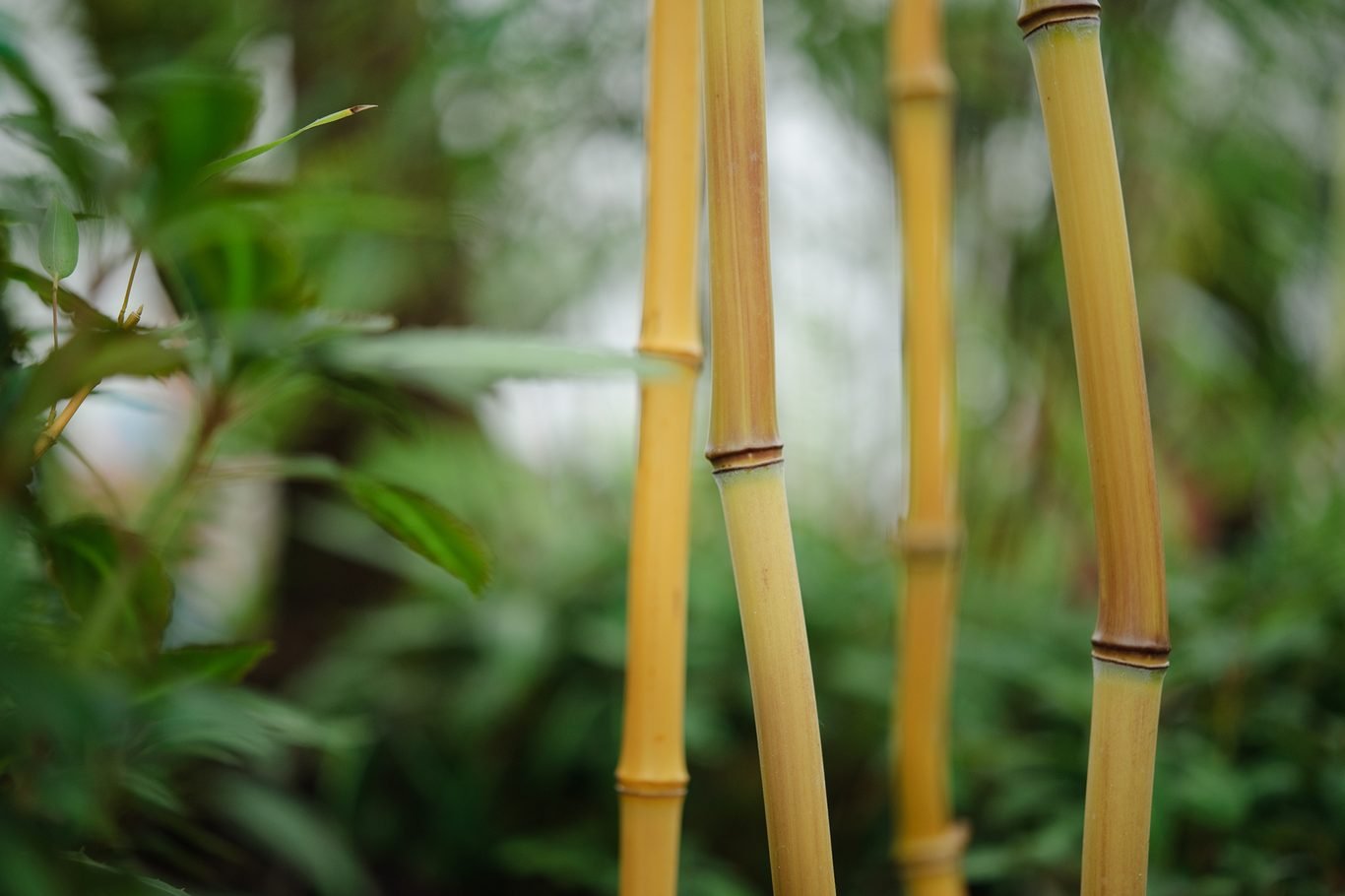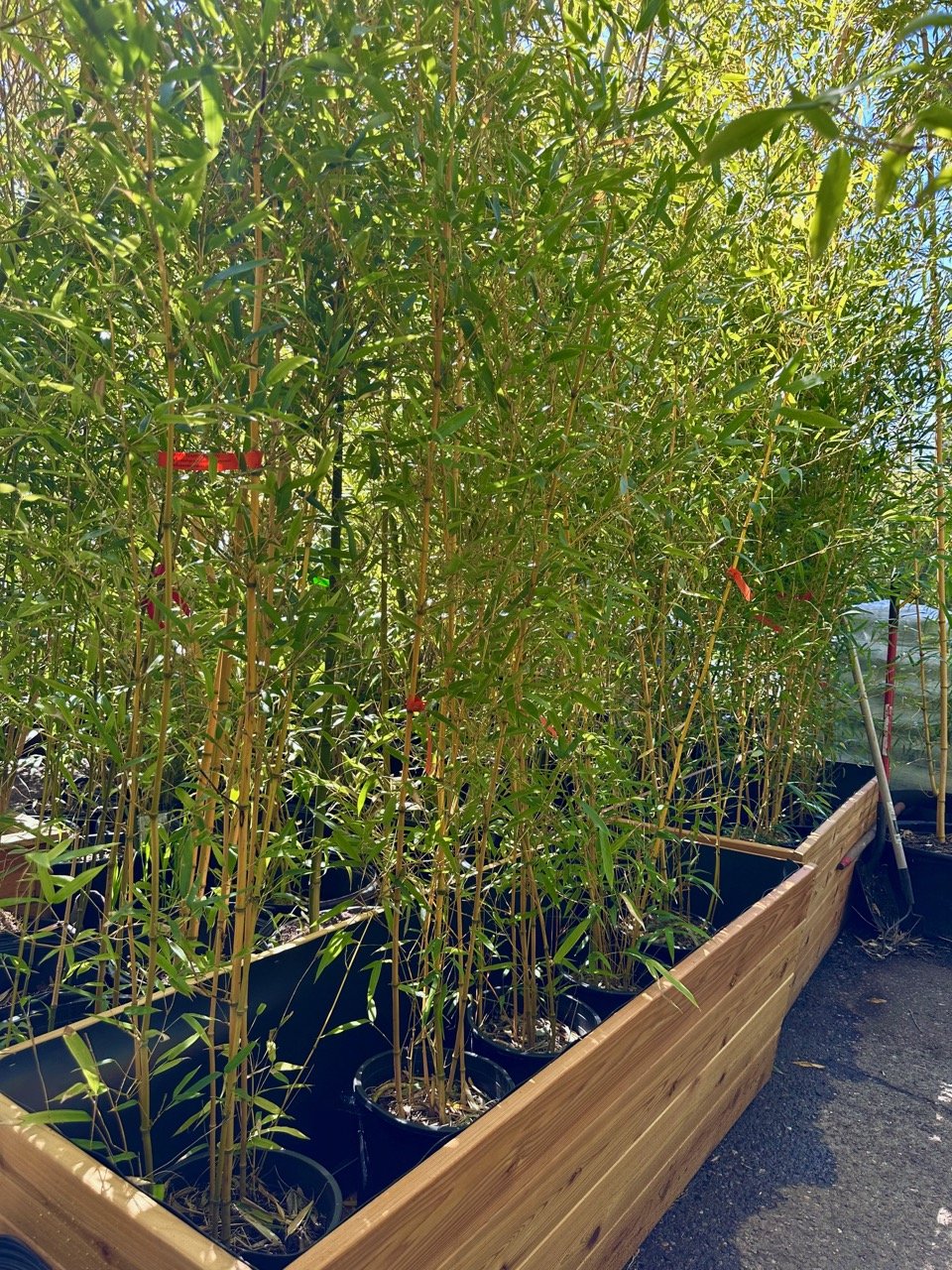
Phyllostachys aureocaulis ‘Lama Temple’
Phyllostachys ‘Lama Temple’ (named after Yonghe Temple, Beijing) is one our favorite gleaming yellow varieties of bamboo. New shoots glow an especially bright, highlighter yellow that blush deep crimson red in the sun and turn buttery lemon yellow.
Similar in growth and stature to ‘Golden Crookstem’, Lama Temple tends to grow slightly shorter and compact in the Seattle area with truer lemon yellow canes. It excels in containers and provide 2nd story screening in large planter boxes or installed groves.
Size:
Height: Single story 8-12’ in large containers, upwards to 25’ in a large grove.
Spread: Running bamboo. While slightly more compact, needs to be confined to containers or strategically managed with root barrier.
Growth Rate: Annual canes emerge by early May in the Seattle area, gaining 3-5’ annually. Overall height is capped by container size.
Form: Very straight, upright canes taper high, creating a very elegant, classically pleasing grove. Older canes can be thinned out to showcase the newest, most colorful canes.
Light Requirements:
Mostly shade to full sun in the Seattle region, but prefers protection from afternoon summer sun for best coloring and leaf development.
Growth Habit:
Culms (canes): New canes begin appearing by early May, elongating to full height by mid-summer.
Leaves: Deep green leaves cluster on long, tapering branches. Remains very green even through winter.
May 2025 - We currently have a beautiful selection of #5 and #7 sizes
$125 -$155
Why Choose Lama Temple?
A choice variety for bamboo collectors and anyone seeking a conversational feature specimen to the patio or yard space. The yellow canes cast a soft glow in the sunlight, brightening dark spaces and winter gloom. Like all varieties of Phyllostachys aureosulcata, leaves remain very dark green year round, creating a dense canopy suitable for 1-2 story privacy.



